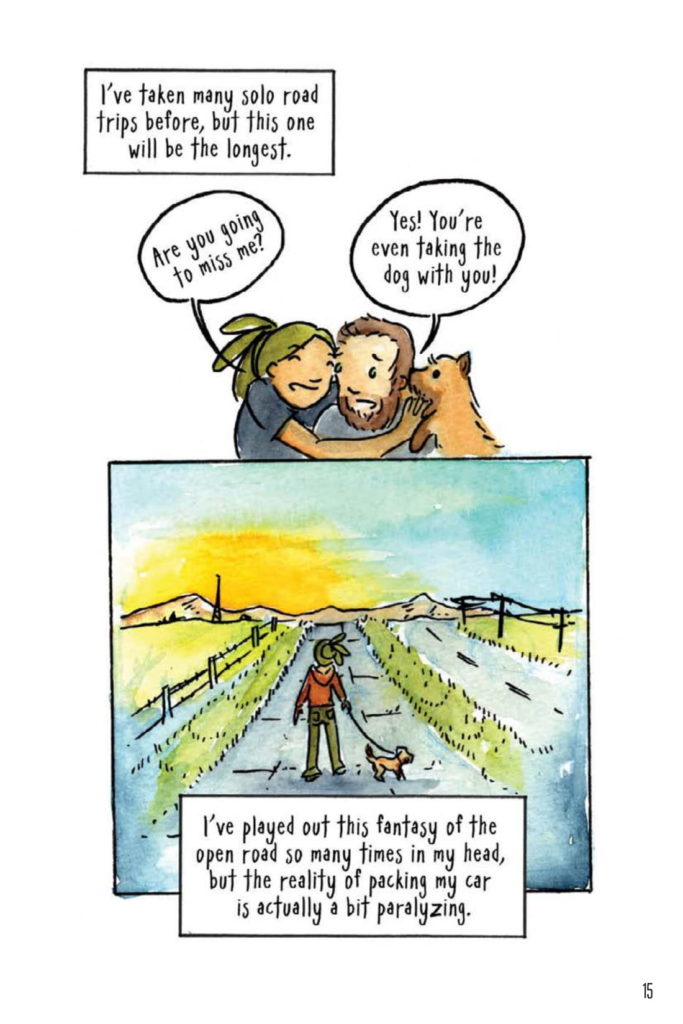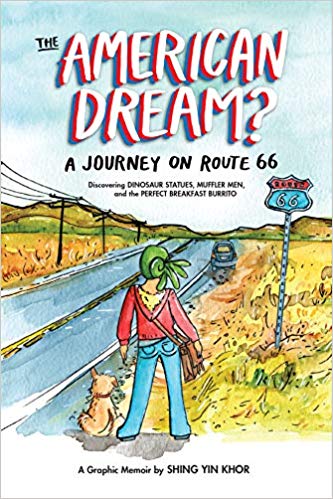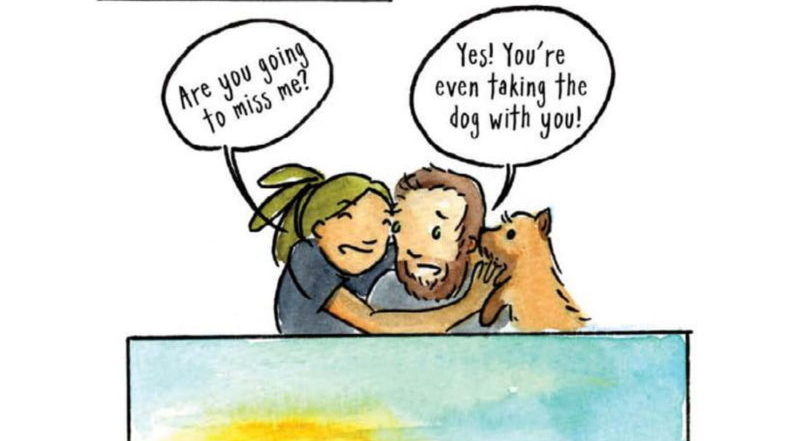INTERVIEW: New graphic memoir takes trip down Route 66
Image: Courtesy of Zest Books / Provided by Superfan Promotions / Provided with permission.
The new graphic memoir The American Dream?: A Journey on Route 66 Discovering Dinosaur Statues, Muffler Men, and the Perfect Breakfast Burrito by Shing Yin Khor details the peculiarities and possibilities of the historic byway that stretches from Chicago to Santa Monica, California. Along the way, Khor takes a look at the competing images of the American dream and how it relates to American reality.
Growing up in Malaysia, Khor had two views of the United States: one that included celebrities from Hollywood and the other that included the impoverished Joad family from John Steinbeck’s The Grapes of Wrath. Khor’s fascination with the double-edged sword that is the U.S. led to their interest in Route 66.
For the uninitiated, Route 66 is a historic and scenic highway that features nostalgic remembrances of 20th century Americana. There are old gold-mining towns, dinosaur statues and plenty of neon signs. Khor soaks in all of this history and offers commentary on the attainment and sometimes disappointment of the American dream.
Hollywood Soapbox recently exchanged emails with Khor about the new graphic memoir. Questions and answers have been slightly edited for style.

What initially inspired you to take a road trip on Route 66?
I’ve just always wanted to drive Route 66. My editor, Daniel Harmon, solicited pitches from me, and when I proposed I do this dream road trip of mine, that was the book that he wanted! So, I set out on the trip knowing that it was going to have to eventually be a book. I’ve always been interested in the elements of the American mythos, and especially the American West. I’ve got an accompanying obsession with the Paul Bunyan mythos, and I am currently really into learning about the Pony Express. Route 66 seems like one of those central elements of the American myth, except instead of just its fascinating history, it also exists very much in the present.
Were you surprised by what you found on this iconic highway?
I’d never driven through the Midwest before. And I think I was a bit surprised to actually find myself recognizing the America I knew a lot, which isn’t an America free of xenophobia or closemindedness at all, but also the America that I knew to be hopeful and kind and steadfast.
I think a lot of the liberal discourse in America tends to ignore a lot of rural areas and write them off as being majority white and xenophobic. And I fundamentally knew that that wasn’t true, but seeing it gave me a lot of hope. Immigrants have made their homes in many places. Queer people have made their homes everywhere. Black and brown people have made their homes everywhere.
The America I love is the one filled with people fighting to make their homes better and more inclusive and to support marginalized voices in their communities.
How did you preserve the memories from the road for the eventual graphic memoir? Journaling? Drawing?
I sketched and drew a little bit on the trip, and some of those pages made it into the final book. I took a lot of photographs for later reference, and much of the book is an amalgam of memory and photo reference. In desperation (for instance, I often had to drive and couldn’t photograph certain things, or couldn’t take pictures in low light), I sometimes had to reconstruct scenes using Google Maps! Ultimately, a lot of my drawings are more concerned with capturing the feeling of driving down Route 66, although I tried to be accurate as much as I could.
I didn’t thumbnail the book as I went — I did so for the first 20 pages or so, and then I approached it more as a travel journal, just one that I had a little more time and space to reflect on.

Do you feel that this book and your memories are extra special given the presidential election in 2016? Would the trip have changed after the election?
I drove Route 66 in April 2016, and I finished the book before Trump took office. I thought Hillary Clinton was most likely to be the next president. I was contending with my identity as an immigrant, and I likely always will. But in April of 2016, I didn’t actually find my citizenship tenuous the way I do in August 2019. I’m not sure I expected the book that I wrote. It is a softer and more introspective book, I think, and perhaps a bit more meandering, than if I had written it right now, where it feels like there is this rage bubbling under my skin all the time.
Even the epilogue of the book, which ends on a hopeful note, is braver than I think I really am now. Confederate flags fly openly in some of the towns I passed through, including in states definitely not in the confederacy. I haven’t stopped road-tripping or traveling, but I am significantly more conscious of where I am going, and of my safety, and who I approach or talk to. The early 2016 version of me was a more friendly, curious and congenial person who wanted to find the joy and conversation in everyone, and the 2019 version of me knows that the majority of white women voted for Donald Trump.
It is bittersweet, but it is an honest book. And I do think it is a good time capsule of that journey, and the person I was, and the feelings I felt on that trip.
How long did it take for you to put everything together once the trip was finished?
I finished the book in about two months.
Do you recommend Route 66 as a must-see drive for others who are looking to experience the United States in this unique way?
A lot of this book was driven by an intense curiosity, and I really hope I get to impart some of that curiosity to readers. I really hope I make people want to travel within America more, to seek out little pockets of comfort and home everywhere. Most of all, I hope that it serves as a starting point to go dig into so many things I wasn’t quite able to get into the book — ranging from really serious and awful topics like the treatment of American Indians and the blatant racism towards Black people along the route, which extended way past the time of the Civil Rights Era, but also wonderful little silly things, like how the dinosaur statues of Holbrook [Arizona] ended up there, and how to tell a Paul Bunyan Muffler Man apart from the other models, even if he doesn’t have his head on.
Is it a must-see drive? Well, it depends. I would not recommend certain parts of it to people of color, and especially Black people, now because it would be irresponsible to send them to places that openly fly confederate flags. But it does reflect a very distinct cross-section of America, complete with racism and xenophobia. It was certainly not without all that when I drove it, but I would say that at least I drove it in the era of politer racism. But I’ve also been heartened by meeting people along the entire route who are actively working to diversify their communities, who understand that the vibrancy of America comes from welcoming all our brothers and sisters and siblings into a country that we all want to do better and make better.
Also, the giant statues really are great.
By John Soltes / Publisher / John@HollywoodSoapbox.com
The American Dream?: A Journey on Route 66 Discovering Dinosaur Statues, Muffler Men, and the Perfect Breakfast Burrito by Shing Yin Khor is currently available from Zest Books. Click here for more information.

